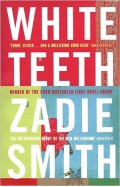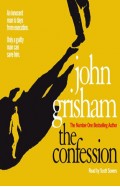Witchcraft: A History in Thirteen Trials
By: Marion Gibson
-
Rs 3,356.00
- Rs 4,195.00
- 20%
You save Rs 839.00.
Due to constant currency fluctuation, prices are subject to change with or without notice.
In Witchcraft, Professor Marion Gibson uses thirteen significant trials to tell the global history of witchcraft and witch-hunts. As well as exploring the origins of witch-hunts through some of the most famous trials from the Middle Ages to the eighteenth century, it takes us in new and surprising directions. It shows us how witchcraft was reimagined by lawyers and radical historians in France, how suspicions of sorcery led to murder in Jazz Age Pennsylvania, the effects of colonialism and Christian missionary zeal on ‘witches’ in Africa, and how even today a witch trial can come in many guises.
Professor Gibson also tells the stories of the ‘witches’ – mostly women like Helena Scheuberin, Anny Sampson and Joan Wright, whose stories have too often been overshadowed by those of the powerful men, such as King James I and ‘Witchfinder General’ Matthew Hopkins, who hounded them.
Once a tool invented by demonologists to hurt and silence their enemies, witch trials have been twisted and transformed over the course of history and the lines between witch and witch-hunter blurred. For the fortunate, a witch-hunt is just a metaphor, but, as this book makes clear, witches are truly still on trial.
In Witchcraft, Professor Marion Gibson uses thirteen significant trials to tell the global history of witchcraft and witch-hunts. As well as exploring the origins of witch-hunts through some of the most famous trials from the Middle Ages to the eighteenth century, it takes us in new and surprising directions. It shows us how witchcraft was reimagined by lawyers and radical historians in France, how suspicions of sorcery led to murder in Jazz Age Pennsylvania, the effects of colonialism and Christian missionary zeal on ‘witches’ in Africa, and how even today a witch trial can come in many guises.
Professor Gibson also tells the stories of the ‘witches’ – mostly women like Helena Scheuberin, Anny Sampson and Joan Wright, whose stories have too often been overshadowed by those of the powerful men, such as King James I and ‘Witchfinder General’ Matthew Hopkins, who hounded them.
Once a tool invented by demonologists to hurt and silence their enemies, witch trials have been twisted and transformed over the course of history and the lines between witch and witch-hunter blurred. For the fortunate, a witch-hunt is just a metaphor, but, as this book makes clear, witches are truly still on trial.
Witchcraft: A History in Thirteen Trials
By: Marion Gibson
Rs 3,356.00 Rs 4,195.00 Ex Tax :Rs 3,356.00
Zubin Mehta: A Musical Journey (An Authorized Biography)
By: VOID - Bakhtiar K. Dadabhoy
Rs 630.00 Rs 1,050.00 Ex Tax :Rs 630.00
No similar books from this author available at the moment.
No recently viewed books available at the moment.
Zubin Mehta: A Musical Journey (An Authorized Biography)
By: VOID - Bakhtiar K. Dadabhoy
Rs 630.00 Rs 1,050.00 Ex Tax :Rs 630.00
Witchcraft: A History in Thirteen Trials
By: Marion Gibson
Rs 3,356.00 Rs 4,195.00 Ex Tax :Rs 3,356.00














-120x187.jpg?q6)













